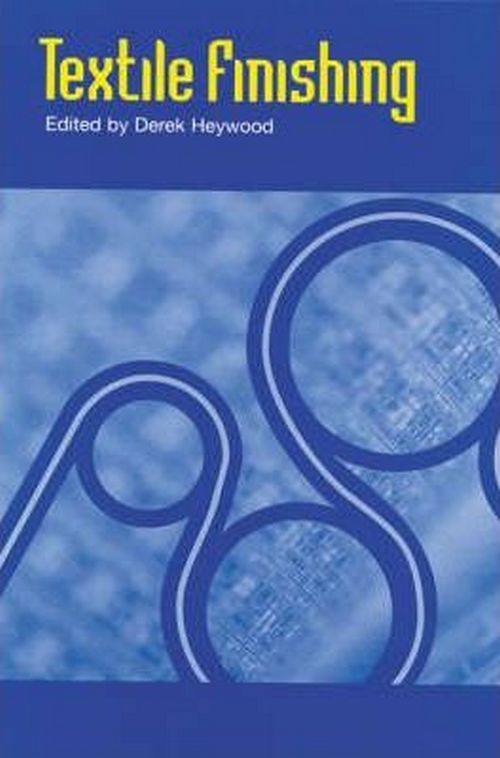
Contents
Preface xii
CHAPTER 1 Mercerisation and liquid ammonia treatment 1
1.1 Introduction 1
1.2 Yarn mercerising 3
1.3 Piece mercerising 4
1.4 Knitgoods mercerising 6
1.5 Improving uniformity of mercerising 9
1.6 Mercerisation of blends 14
1.7 The mercerisation of linen 15
1.8 Wetting agents 15
1.9 Caustic recovery 16
1.10 Liquid ammonia treatment 18
1.11 Properties of mercerised and ammonia-treated
textile products 22
1.12 Testing 29
References 31
CHAPTER 2 Drying and setting 34
2.1 Mechanical methods of water removal 34
2.2 Evaporative drying 38
2.3 Drying machines 48
2.4 The economic control of dryers 54
2.5 Heat setting 55
References 59
CHAPTER 3 Application methods 61
3.1 Introduction 61
3.2 Dip and nip padding – the pad mangle 61
3.3 Low wet pick-up 63
3.4 Uniformity of distribution – critical application value 64
3.5 Low wet pick-up application methods 67
3.6 Saturation-removal methods 68
3.7 Topical application methods 74
3.8 Spray application systems 79
3.9 Foam application methods 81
3.10 Foam application systems 87
3.11 Comparison of low wet pick-up application methods 95
3.12 Wet-on-wet application 97
References 99
CHAPTER 4 Mechanical finishing – traditional and modern 101
4.1 Introduction 101
4.2 Finishing works management structure 103
4.3 Grey cloth department 104
4.4 Traditional finishing 105
4.5 Calendering 114
4.6 Emerising 125
4.7 Raising 131
4.8 Compressive shrinkage 133
References 134
CHAPTER 5 Water-repellency and waterproofing 135
5.1 Introduction 135
5.2 Theory of wetting and repellency 137
5.3 Fabric construction and preparation for
water-repellent finishing 148
5.4 Water-repellent finishes other than fluorochemicals 150
5.5 Fluorochemical repellent finishes 166
5.6 Repellent finishes 186
5.7 Novel treatments with potential for water-, oil-, soil- and stain-repellency 198
5.8 Waterproofing of textiles 202
5.9 Test methods for water-repellency, oil-repellency and stain-resistance 207
References 210
CHAPTER 6 Flame-retardant finishes and finishing 214
6.1 Introduction 214
6.2 Hazards of burning textiles 214
6.3 Burning and flame retardancy 216
6.4 Current flame-retardant finishes 223
6.5 Application of flame-retardant finishes 238
6.6 Current issues 241
6.7 Conclusions 247
References 249
CHAPTER 7 Chemical softening 251
7.1 Introduction 251
7.2 Chemical soft finishing 252
7.3 Cationic softeners 257
7.4 Chemistry of cationic softeners 262
7.5 Amphoteric soft finishes 273
7.6 Non-ionic soft finishes 275
7.7 Anionic soft finishes 280
7.8 Reactive soft finishes 281
7.9 Silicones 282
7.10 Environmental aspects of chemical softeners 291
7.11 Measurement of softness 293
References 302
CHAPTER 8 Antistatic and soil-release finishes 308
8.1 Antistatic finishes 308
8.2 Soil-release finishes 320
References 334
CHAPTER 9 Easy-care finishing of cellulosics 337
9.1 Introduction 337
9.2 Historical review 338
9.3 Easy-care properties 339
9.4 Easy-care technology 343
9.5 Formaldehyde-free easy-care finishing 345
9.6 Conclusions 348
9.7 Appendix – auto-condensing textile resins 348
References 350
CHAPTER 10 Anti-microbial, rotproofing and hygiene finishes 351
10.1 Introduction 351
10.2 Field of application 352
10.3 Mode of action 356
10.4 After-treatment 359
10.5 Treatment of fibres 359
10.6 Materials to be protected 360
10.7 Practical biocides 361
10.8 Modern biocides 365
10.9 Test methods and assessment 365
10.10 The future 370
References 371
CHAPTER 11 Wool finishes: the control of shrinkage 372
11.1 Introduction 372
11.2 Fibre structure 372
11.3 Felting and shrinkage – the dimensional stability problem 374
11.4 Measurement of shrinkage – equipment and procedures 376
11.5 Shrinkage prevention and control 379
11.6 Processing – the issues and options 383
11.7 Additional aspects 388
11.8 Commercial process routes 389
11.9 The future 397
References 397
CHAPTER 12 Mechanical finishing of wool fabric 399
12.1 Introduction 399
12.2 Setting 401
12.3 Milling, fulling and fabric development 416
12.4 Cropping/shearing 425
12.5 Fabric conditioning 428
12.6 Raising/teaselling 432
12.7 Pressing 437
12.8 Relaxing/sponging/shrinking 439
12.9 Conclusions 443
References 443
CHAPTER 13 Coating, laminating, bonding, flocking and prepregging 447
13.1 Introduction 447
13.2 Market considerations 448
13.3 Applications for coated fabrics 463
13.4 Coating compounds 476
13.5 Coating methods and machines 483
13.6 Lamination methods and machines 500
13.7 New technological development in the laminating market 504
13.8 Bonding 508
13.9 Flocking 510
13.10 Prepregging 515
13.11 Ovens 518
13.12 Environmental considerations 522
13.13 Test methods 525
Preface
When I was first approached by the Society of Dyers and Colourists to be managing editor of Textile Finishing, I realised that this gave me the opportunity to say thank you to an industry that had given me pleasure and friendships during the last years. Also I realised how much had changed in the field of textile finishing during that period of time. Entering into finishing when home-made urea formaldehyde resins where state-of-the-art and Borax was the main flame resistant finish.
The finishers who taught me so much at the start of my career (Jim Lowe, Heaton Mills Printing Company; Ron Bradley, Bollington Printing Company; George Donague, J H Earl) would be amazed at the chemicals and techniques used in the present industry, together with the durability and quality of the final product. Throughout this book we have brought together all the major techniques and auxiliaries used in present day finishing which will be invaluable to finishers and students alike.
I doubt in the years to come if there will be as many major advances as we have seen in the last years of textile finishing. Therefore I would like to thank all the authors and the SDC for the opportunity of producing this book which should provide an excellent building block for the future generations of finishers in all countries where textile finishing is carried out.
DEREK HEYWOOD
